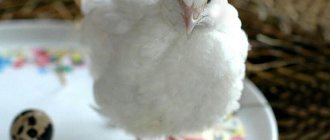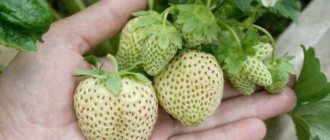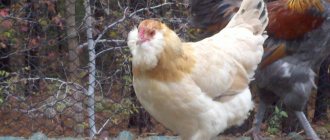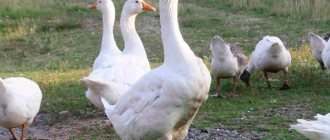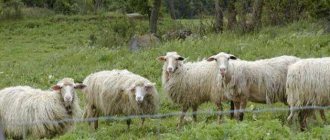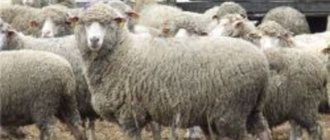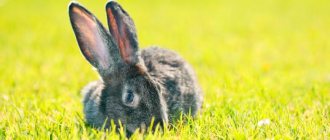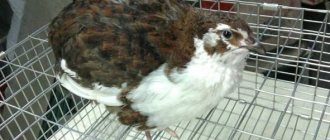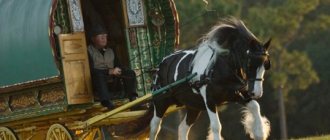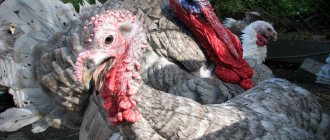If you are going to breed quails exclusively for meat, without focusing on their egg production, it is better to choose one of the two existing breeds of broiler quail: Pharaoh and Texas white.
Both breeds of broiler quail are characterized by rapid weight gain and are “relatives”, since the origins of any breed of domesticated quail are the Japanese quail. Although there are many species of wild quail in nature, these species have no productive significance.
Video "Keeping White Texans"
Be sure to watch this video that tells you how to keep Texas White broiler quail.
Lighting
Quails of this breed love somewhat dim lighting. Too bright can damage them. As a result, the cages are placed away from the windows. Bright light and other irritants can cause stress in these birds, and this can lead to a decrease in egg production and even egg pecking. Likewise, you need to make sure that other animals, even cats, do not have access to the room; they can disturb the bird.
For lighting, one fluorescent lamp or 5 ordinary 25-watt light bulbs are enough.
Cells
The cages in which the Texas quail will be kept can be made independently or purchased in special stores. Since representatives of this breed are quite large, they need to be kept in larger cages than, for example, cages for Japanese quails. For 30 young individuals, a cage with a floor size of 90 by 40 cm is required, and the best height is 20 cm. If the stocking density is too high, then frequent fights are possible, leading to injuries and even death of weaker individuals.
The cages where broiler quails live must be provided with an egg collector, otherwise the birds will simply crush them. The floors in the cages are made of mesh, and trays for litter should be placed under them, this is necessary to facilitate cleaning.
To save space in the room, cages or cell batteries can be placed opposite each other. The bottom row should be raised above the ground by about one meter. This is done to make them easier to clean and collect eggs.
Young animals are usually raised in cardboard boxes corresponding in size to the number of heads. There should be at least 50 cm2 of floor space per bird.
Temperature
Broiler Texas quail, like all representatives of this species of birds, are sensitive to low temperatures and if they drop, they will begin to cluster and squeak. Such grouping is fraught with injury and even death of some individuals.
Optimum temperature +20C.
Humidity
Representatives of the Texas breed are susceptible to temperature fluctuations. 60-70% is considered the norm; in case of deviation from these limits, various negative phenomena are possible, from decreased egg production and weight gain to feather breaking.
Hygiene and diseases
It is advisable to remove droppings from the cages in which the birds are kept every day. Periodically disinfect not only the cells themselves, but also the entire room.
In turn, it is necessary to constantly inspect all individuals and, in case of the slightest suspicion of a disease, place it in a quarantine cage or box.
Diseases can be triggered by a variety of influences:
- poor quality food;
- injuries;
- stale or contaminated water;
- unsanitary conditions in the premises.
Feeding
Texas white broiler quail can be fed only high-quality, complete and balanced feed containing sufficient protein and other nutritional components. It’s very bad that our industry does not produce special food for quails, probably because this bird is just beginning to spread in our country. Perhaps in the future the situation will improve and any quail breeder will be able to purchase the feed his birds need without any problems. For 100 heads of quails of this breed, about 4.5 kg are required per day. stern.
Small quails need to be given food of animal origin, a little more than plant food. It can be:
- boiled egg;
- cottage cheese;
- curdled milk;
- crushed crackers;
- finely chopped greens.
You can also give compound feed that is fed to the chickens of another bird. This must be done until the chicks reach ten days of age. In the future, the share of plant food should be gradually increased; adding animal food is also acceptable.
From the age of one month you can feed them with mixed feed based on the following ingredients:
- corn;
- barley;
- wheat;
- cake;
- bone and fish meal;
- ground shell;
- salt;
- premix
Nutrition
Texas quails and Pharaohs are famous for their good appetite, but they are still ahead of Texas quails in terms of the amount of food consumed.
The basis of the diet is grains:
- millet;
- oats;
- barley;
- corn.
In summer, green food is added to grains: clover, alfalfa. Among the preferred root vegetables are beets and carrots.
Quails can immediately eat feed intended for adult birds, only the feed must first be crushed.
Since the hatched chicks are very weak, more nutritious food valuable for microelements is introduced into their diet: grated cottage cheese, eggs (not chicken), chopped greens, bread crumbs.
The diet of laying hens should contain feed containing the following additives:
- salt;
- crushed shells;
- crushed fish waste.
With a population of 100 birds, it is necessary to stock up on feed at the rate of 4-5 kg per day.
Universal or meat and egg
The main characteristic of egg species is the level of their egg production
For quails of this direction, the quality and quantity of eggs is important. Due to the specifics of the directions, they are bred primarily for the sake of obtaining extremely healthy eggs, but the meat of egg breeds often does not differ in quality from meat directions
We suggest you read: Calcivirosis in cats and kittens
However, birds with high egg production are small in size, so it is difficult to obtain a sufficient amount of meat products from them. One of the oldest and most proven egg breeds is the Japanese quail. Representatives of this breed have maximum egg production - over 300 eggs per year. The period of egg production begins after 2 months of life.
Japanese
Birds have a maximum annual egg production of 300-320 eggs. However, the eggs have a small weight, ranging from 8–12 g. The young gain weight quite quickly. With the right diet, after 40 days it can catch up with the weight of adults. Due to the specific coloring of the breast feathers, 20 days after birth, males and females can be distinguished.
English white
Egg production of birds is observed from the age of 40-45 days.
The breed was bred in Great Britain and brought to Russia in the 80s. Due to the white plumage, the skin of quails has a pink tint, which gives the carcass an attractive presentation. English white quails weigh more than their Japanese relatives, so they can be used for meat products.
Males weigh on average 160 g, and females can gain up to 180 g. Females begin to lay eggs at the age of 40-45 days. The annual egg production is 280 pieces weighing 10-11 g. The birds are unpretentious in maintenance and feed. The only drawback may be the difficulty in distinguishing males and females for new birders.
There is also a variety of English black quail.
Marble
The breeds of this direction have a very conditional division. Their natural characteristics do not differ significantly from birds producing eggs and meat. Quails of universal breeds have approximately the same parameters in terms of egg production and quality/quantity of meat. They can be bred for egg production or for dietary meat.
Estonian
The Pharaoh is one of the most popular quail breeds, obtained from crossing the Japanese breed, the English White and the Pharaoh. Has a number of positive qualities:
- High probability of egg fertilization (92%).
- Viable young animals, the survival rate of which is up to 98%.
- Unpretentiousness to living conditions and food, excellent immunity.
- Precocity. Females begin to lay eggs at 37-40 days of age.
- High egg production. The bird can lay 300 or more eggs per year, weighing 9-12 g.
- The average weight of males is 170 g, and females are about 200 g. If birds are slaughtered at the age of 4-5 months, you can get juicy, tender meat without excess fat.
- The sex of a bird can be easily determined by the color of its feathers.
Tuxedo
Tuxedo quail is great for small farms
Quails of this species have a characteristic plumage - a dark back and back, with a light spot in front. It is the result of selection of English white and black birds. First of all, it has gained popularity for egg production, but also has meat value in private farms. The weight of the female is 160-180 g, and that of the male is less than 160 g.
Manchurian
The breed is popular due to its versatile qualities. It has a characteristic unusual color - light feathers with a golden tint. Representatives of Manchurian quails are distinguished by good egg production and excellent meat characteristics. The average weight of a male is 160-180 g, and that of females is about 180-200 g.
We suggest you read: How to take care of your pet in winter
Thanks to its light plumage, the carcass has an attractive presentation. The average annual egg production is 220 pieces. The eggs are large in size, their average weight is 16 g. Birds of this breed are characterized by sexual dimorphism - the sex of the chicks can be revealed in the early stages of life. The disadvantage of the breed is the survival rate of young animals - 85%. In general, Manchurian quails have good immunity and are unpretentious to their living conditions.
Phoenix
Many poultry farmers consider this species to be a fiction or a Manchurian quail with a changed name. In fact, the golden phoenix is a broiler branch of the Manchurian quail of French origin. The light yellow plumage of the Phoenix resembles the golden tint of the Manchu, so they are often confused.
Appearance
A representative of this breed has white plumage; small dark gray spots on the head are allowed. At the same time, under the white plumage the skin has a pinkish color, and in places of spots it is gray. Therefore, when selecting young birds, chicks with a minimum number of spots are selected in order to improve the appearance of the carcass.
The bird's plumage is lush. The back and convex chest are well developed. A small head and short neck are discordant with a large, dense build. The eyes are round and black, the beak is beige, sometimes with a dark tip. The light pink legs are muscular.
What you need to know about growing
If you choose the right room for keeping quails and at the same time follow all the subtleties of care, then breeding Texans will not be difficult at all.
Temperature readings
They are the most important factor due to which the bird will gain weight as needed.
After the young are born, the quail must be transplanted into a box or cage where the temperature is maintained at least +38 degrees. The temperature of the space surrounding the cage should not fall below +28. In such conditions, young animals are kept for up to 10 days.
Young animals
Starting next week, temperatures will begin to gradually decrease. In the box it should not be lower than +32, and indoors it should be set at +25.
Then by day 25 the temperature should be +25, and then it is brought to +18.
Today, the farmer does not need to independently calculate the ration; all this has already been done. Feed is selected based on breed and age characteristics
It is important that the manufacturer is good and responsible for the quality of its products. There are a number of subtleties in feeding quails that the owner should know:
from the first week, meat broilers should be given boiled eggs, bone meal, yogurt, and curd products. All this contains protein necessary for birds
All feed must be thoroughly ground; It is important not to forget about green food. With the onset of winter, you can give vegetables, boiled potatoes, beets, carrots; The diet must contain mineral supplements: crushed egg shells, chalk, bone meal, gravel or shell rock; You can increase the growth rate using waste from fish production
Options for installing feeders and drinkers for quail
Texans need drinking stations with fresh water that is changed daily. Otherwise, the liquid will heat up and have a harmful effect on the digestive system.
Lighting requirement
Texas quail should not be exposed to bright lighting. If the room is small, then 60-watt lamps are suitable. Bright light causes aggression in these birds; attacks on each other may begin, which lead to injuries, and the females begin to lay eggs much worse. For newly hatched chicks, lighting is provided around the clock, from the second to the fourth week no more than 20 hours, then reduced to 17.
Temperature
Broiler quails are heat-loving birds, so the optimal temperature for keeping them is about 18 ⁰C. In the cold season, birds begin to squeak and flock together. With this method of natural heating, quails get injured. To prevent bird losses, it is necessary to install heaters.
In cages with chicks up to 4 days old, the temperature should reach 36 ⁰C. In the next 7 days you can lower it to 33 ⁰C. Next, chickens up to 2 weeks of age are kept at temperatures up to 25 ⁰C. After reaching 14 days, the birds are suitable for the general temperature regime.
Peculiarities of care and maintenance of Texas white quails in private farming
Note! The key points of caring for Texas quails are not difficult to implement even for those who are raising these birds for the first time. However, the main points of content have a decisive influence on productivity. The main parameters are the equipment of the room, and compliance with certain rules
Taking into account the fact that this breed is larger, you need to understand that in its case the standard cage of 20 cm in height is not suitable. The bird will be cramped and it will be difficult for males to cover females, which will certainly affect the number of eggs that are not fertilized
The main parameters are the equipment of the room and compliance with certain rules. Taking into account the fact that this breed is larger, you need to understand that in its case the standard cage of 20 cm in height is not suitable. The bird will be cramped and it will be difficult for males to cover females, which will certainly affect the number of eggs that are not fertilized.
A device for collecting eggs, drinking bowls and feeders are installed in the cages. For convenience, pull-out trays are installed below to collect litter. Young chicks from 3 weeks old can be kept for some time in a cardboard box in a safe and comfortable place.
Note! When choosing a cage or installing it yourself, it is important to consider the size of a three-week-old quail so that the chick cannot get stuck between the bars or fall out. Approximate cell size 35x45 mm.
Any room, similar to a completely dry and lighted barn, is suitable for breeding Texas quails.
It sets the optimal temperature for birds. Ventilation should not allow drafts, and it is better to make window openings in the south or east direction
Any room, similar to a completely dry and lighted barn, is suitable for breeding Texas quail. It sets the optimal temperature for birds. Ventilation should not allow drafts, and it is better to make window openings in the south or east direction.
To protect birds from sunlight and animals dangerous to them, install a fine mesh as a canopy. The room is usually used with a size of about 10-15 square meters, this is the required minimum.
To make efficient use of space, birds can be kept in metal or plastic cages, including those arranged in tiers. The cage is chosen or constructed with the expectation that one quail needs on average about 20-30 centimeters of free space. You can increase it to 50, so the bird will feel best.
For breeding you will need an outbuilding of approximately 10 to 15 m2. Provide ventilation and avoid drafts. Cages can be installed in tiers; birds are completely fine with this. The cage size can be 40 by 90 by 30 cm. Keep in mind that one individual needs about 50 cm2 of the entire cage area. It is better to make the ceiling of the cage from soft materials so that the individuals do not get hurt when trying to take off. A drinking bowl, feeder, and egg collector are installed in the cage.
Helpful advice! Place the birds in such a way that there are no more than 2 females per 1 male, because due to their rather calm nature, they do not trample females so often and actively. It must be taken into account that if there is not enough space, then pecking may begin among the birds, and if there is a lot of space, then their egg production decreases.
It is advisable to have an aviary for walking quails. In the enclosure you need to make a canopy from rain and sun. Choose a fence with a fine mesh so that neither the bird nor its head can get through.
Quails NPO "Complex"
At the production and experimental factory of NPO Kompleks, a separate population was bred, which is already classified as a breed (without a name yet). It was obtained from crossing meat pharaohs and marbled quails. This is a universal type of meat and egg production - they produce up to 260 eggs per year, and the live weight is up to 200 g for the female and 170 g for the male. In appearance they are similar to the Japanese breed.
Quail NPO Complex is an established separate breed
How many eggs a hen will produce depends on the lighting and the number of birds per 1 sq.m. When crowded, productivity drops.
Receiving chicks and feeding the young
Female quails of the Manchurian breed do not hatch offspring. To hatch quails, farmers purchase an incubator. How to use it is described in the article “Rules for incubating quail eggs.” The withdrawal period is 18 days, plus or minus a day.
Newborn quails are fed up to 6 times a day. The first complementary food is finely chopped hard-boiled eggs. They add feed or cottage cheese
It is important to supplement the chicks with shells and chalk. Quail offspring should be given water only with boiled water.
Detailed information about caring for quail chicks can be obtained in the articles: “Caring for quail chicks”, “What to feed small quails”.
American albinos
They are also called American Whites - this is a broiler line, the female weighs about 500 g, and if desired, they can be raised up to 700 g. Often these crosses are confused with the Texas breed, and sellers deceive buyers by slipping eggs and young Texans, which are several times cheaper .
These quails are very resistant to diseases; they do not require vaccination when kept on a farm or in an apartment.
Albino quail is a separate breed from the USA
Options
- The live weight of the female is up to 520 g.
- How much does a male weigh? Up to 450 g.
- Egg production – 60-75 eggs per year.
- Egg weight – 15 g.
Diseases and prevention
Even such resistant breeds as Estonians are still susceptible to diseases. Therefore, the owner’s task is to also monitor the health of the birds.
Necessary measures:
- Monitor the birds' appetite and mobility.
- If there are signs of illness, the quail is isolated from the rest and contacted by a veterinarian.
- Place buckets of soda or choir.
- Use ultraviolet lamps.
Symptoms of an unhealthy bird
Signs that appear in birds when they are sick:
- bald patches and loss of feathers on the back;
- brittle plumage;
- wounds;
- poor appetite;
- throw back their head;
- stretch the neck;
- lower their wings;
- ruffles feathers.
Sick birds that have contracted the infection move little, hide their heads under their wings, and look sleepy and lethargic. Breathing is heavy and a cough may occur.
Contagious diseases
Transmitted by direct contact and through the air, the mortality rate in such cases is quite high. The most dangerous on this list are:
- Pseudo-plague. It is also transmitted through food, water and droppings.
- Avian cholera. The methods of infection are similar.
- Pullorosis. It affects only young individuals, but is fatal. Reasons: hypothermia or overheating, poor food, lack of drinking water.
- Psittacosis. Fever appears, the lungs and nervous system are affected.
- Aspergillosis. Fungal disease. The birds become weak, their legs and beaks turn blue, their breathing is heavy, and they drink a lot due to thirst.
- Newcastle disease. Carriers are rats, cats and other poultry. During illness, the quail's eyes become cloudy, and the droppings are liquid and dirty green.
- Colibacillosis. Intestinal disease. Similar to pullorosis, but develops much faster, to epidemic proportions. The birds are lethargic and constantly trembling. The carcasses and eggs of dead individuals must be destroyed.
- Avian cholera or pasteurellosis. It affects the liver of birds and disrupts metabolism. A characteristic manifestation is liquid droppings with blood. Does not respond to treatment. The carcass of the dead bird is burned, the poultry house and cages are treated.
Non-communicable diseases
Conventionally divided into 3 groups:
- Due to improper diet. This means that the food contains either too few nutrients or too many. Look for a middle ground or change the mixture.
- Due to improper maintenance. This is low humidity, drafts. Treated with vitamin B, feed yeast. And improving conditions.
- Due to injuries. The wounded individual needs to be removed, the wound treated, preferably bandaged.
Improper nutrition can also provoke such a complex disease as prolapse of the oviduct with an egg. This happens if you start feeding the chicks with adult food, this causes early egg laying when the body is not yet ready
Therefore, it is very important to provide different nutrition to adults and chicks.
Incubation
The largest eggs, which often have two yolks, are only suitable for food. For incubation, medium-sized eggs from females no older than 10 months are selected. It is not advisable to store eggs for longer than 5 days before incubation, as the hatchability rate will decrease. The incubation process is standard.
The hatched chicks are left to dry in the incubator for 12 hours. The quail are kept in a brooder for several weeks, lowering the temperature by 0.5 degrees every day from 37 to 22, after which they are transferred to cages for adult birds.
About the advantages and disadvantages
Also check out these articles
- TGB incubator
- Grape variety Laura
- The best varieties of blackcurrant
- The best varieties of white grapes
Incubation of Texas Quails
As with any type of quail, these also have a number of positive and negative aspects in feeding, maintenance, and productivity. The positive qualities of the breed include several points.
- The weight of a female can reach 360, a male - 470 grams, and after slaughter and dressing, a Texas quail carcass ready for consumption or sale will weigh approximately 260 and 360 grams, respectively.
- The meat is tasty, tender, dietary.
- At two months they begin to lay eggs.
- The eggs are large (12-14 grams) and of high quality.
- Unpretentious.
- They rarely get sick.
- Balanced, quiet and calm, do not cause inconvenience.
The following should be highlighted from the negative points.
- Breeding birds is possible, but not easy, you need skill and correct proportions in terms of the number of individuals of different sexes.
- They don't fly much.
- Females lack the brooding instinct - they are bad mothers.
Texas quail are quickly gaining market share. This is one of the most promising breeds for industrial breeding in any climatic conditions. You can keep birds at home if the main purpose of rearing is to produce meat. The breed has many advantages, here are the main ones:
- Rapid growth and weight gain.
- Good taste and characteristics of the meat composition.
- There are no problems with the oviducts.
- Undemanding content.
- Easy maintenance with minimal costs.
- Good appearance of the carcasses.
- The feathers come off the skin easily.
- Although the quail does not lay eggs well, the weight of its testicles is higher than that of other breeds.
Like any breed, the Texas has a number of disadvantages. The disadvantages include:
- Low egg production.
- Egg fertilization is not too high.
- Relatively high feed consumption.
- It is difficult to determine the sex of Texas quail.
- Males are too passive.
- Chicks are often born weak.
Separation of quails according to purpose
Like other farm birds, quails are divided into several groups:
- meat and egg;
- egg;
- meat breed;
- decorative types.
Regarding the first two directions, it is worth noting that they do not have much difference. The weight of the carcasses and how many eggs a bird lays per day are almost the same. The difference can only be noticed if there are over 10 thousand individuals in their care, that is, only on large industrial farms.
Characteristics of the main breeds - comparison table
But the meat types of quail differ very noticeably - due to their size.
Pharaoh quail weighs 100-150 grams more than wild species or the same Japanese quail. We offer you a description with photos of the most suitable breeds that can be kept in an apartment or on a farm.
Black English Quail
Be sure to watch this video that tells you how to keep Texas White broiler quail.
Lighting
Quails of this breed love somewhat dim lighting. Too bright can damage them. As a result, the cages are placed away from the windows. Bright light and other irritants can cause stress in these birds, and this can lead to a decrease in egg production and even egg pecking. Likewise, you need to make sure that other animals, even cats, do not have access to the room; they can disturb the bird.
For lighting, one fluorescent lamp or 5 ordinary 25-watt light bulbs are enough.
Cells
The cages where broiler quails live must be provided with an egg collector, otherwise the birds will simply crush them. The floors in the cages are made of mesh, and trays for litter should be placed under them, this is necessary to facilitate cleaning.
Cellular content of Texans
To save space in the room, cages or cell batteries can be placed opposite each other. The bottom row should be raised above the ground by about one meter. This is done to make them easier to clean and collect eggs.
Young animals are usually raised in cardboard boxes corresponding in size to the number of heads. There should be at least 50 cm2 of floor space per bird.
Temperature
Broiler Texas quail, like all representatives of this species of birds, are sensitive to low temperatures and if they drop, they will begin to cluster and squeak. Such grouping is fraught with injury and even death of some individuals.
The optimal temperature is 20C.
Humidity
It is advisable to remove droppings from the cages in which the birds are kept every day. Periodically disinfect not only the cells themselves, but also the entire room.
In turn, it is necessary to constantly inspect all individuals and, in case of the slightest suspicion of a disease, place it in a quarantine cage or box.
Diseases can be triggered by a variety of influences:
- poor quality food;
- injuries;
- stale or contaminated water;
- unsanitary conditions in the premises.
Feeding
Feeding the bird
Small quails need to be given food of animal origin, a little more than plant food. It can be:
- boiled egg;
- cottage cheese;
- curdled milk;
- crushed crackers;
- finely chopped greens.
You can also give compound feed that is fed to the chickens of another bird. This must be done until the chicks reach ten days of age. In the future, the share of plant food should be gradually increased; adding animal food is also acceptable.
From the age of one month you can feed them with mixed feed based on the following ingredients:
- corn;
- barley;
- wheat;
- cake;
- bone and fish meal;
- ground shell;
- salt;
- premix
This breed was bred in England. True, there they call it Tibetan. The body weight of these birds is 6-8% greater than the previous breed, but they are inferior in egg production. The main difference from other species is the color of the plumage: black with a brown tint. Suitable for keeping in an apartment.
English black quail with brown tint
Options
- The weight of the female is up to 180 g.
- The male weighs 160-170 g.
- Egg production is about 280 eggs per year.
They differ only in the color of their plumage, although these breeds of quail are different. Representatives of the breed were recently brought to our country from Hungary by amateur poultry farmers. Egg laying begins on the 40th day. This bird is calm and undemanding, so it actively spreads throughout private households. There are two opinions on how many eggs the breed produces, some say no more than 240, others 280.
English white quail is quite unpretentious
Options
- The live weight of the female is up to 170 g, marketable weight is 110-120 g.
- The male weighs up to 150 g or 90 g of meat.
- Egg production – up to 280 eggs per year.
- Egg weight – 10-11 g.
The Englishman, according to the description, has black spots not only on his head, but also on his side (picture taken from the Internet).
By what characteristics can you distinguish a female from a male? Experienced sparrowhawks can distinguish them by various properties: color, physique and even voice, but this is for professionals.
We invite you to read: Detailed description of the Asian tabby cat breed
You can determine the sex at a period of 3 weeks or more in the following way: turn it over with its back, spread the feathers under the tail, if a tubercle is felt there, when pressed, foam is released, then it is a male.
Japanese quails
Perhaps it is worth starting with this breed, since it was the Japanese quail that became the ancestors of all other species. Many years ago, this species was distinguished from others, since its egg production is very high. Japanese quails were the first to be used in industrial production.
The incubation instinct of hens was lost, but other, even better qualities appeared - year-round egg production and a calm disposition. This breed is also called “mute”, since the bird does not make any sounds.
The Japanese quail is similar in appearance to the common quail, but larger in size.
Options
- The weight of female carcasses ranges from 130 to 150 g.
- Males will be a little lighter - from 110 to 120 g.
- The approximate weight of eggs is from 10 to 12 g.
- Egg production per year is up to 300 eggs, that is, birds lay them almost every day.
Japanese quails are an ideal option for breeding in an apartment, since they do not require special conditions, are unpretentious and quite economical in feed.
Females can be easily distinguished from males - they have a large brown spot on their chest.
Development of young animals
The weight of a hatched tuxedo quail is 7-8 g. After the chicks hatch, they are kept in the incubator for several more hours to dry, after which they are transferred to a brooder - a kind of nursery for newborns, where it should be very warm. Here they will spend the first weeks of life. The poultry must be sorted. Weak chicks and those with obvious developmental anomalies are very difficult to hatch. In most cases, they die in the first days of life. It is impractical to keep such animals, so many experienced quail breeders get rid of them without hesitation.
Those who are caring for young tuxedo quail for the first time should remember that the chicks are small and nimble. They can easily crawl under fabric bedding and die there. If they are cold, they huddle together and squeak; if it is too hot, they lie with their necks stretched out. You may not be able to keep track of the quails. They easily overheat and freeze. The best option is to use an infrared lamp, which can be hung above the brooder box and its height can be adjusted to make the chicks comfortable. The air temperature in the first ten days in the brooder can reach 35-38C. Then it should gradually begin to be reduced, and by the age of one month the birds can already be kept at room temperature - 22C.
Nutritional Features
Feeding young tuxedo quail is not difficult. The easiest way is to use special factory compound feed for quails, which should be additionally ground into almost flour during the first days. They simply will not be able to peck at larger granules. In its absence, it is best to opt for compound feed for turkey poults, since it is considered to be more nutritious than usual for chickens or broilers. You can simply pour the food onto the bedding or into feeders with very low sides.
Additionally, Tuxedo Quail chicks should always have clean water poured into a very shallow water bowl to prevent them from drowning. Some people use plastic lids for jars. You can take a regular drinking bowl for chickens, but put several small stones in the groove so that the quails can only drink and not completely climb into the drinking bowl.
For the first two weeks, the chicks need round-the-clock, but not too bright, lighting, then the daylight hours begin to gradually decrease, bringing it to 17 hours by the age of one month.
If we take into account all the nuances of caring for tuxedo quails, the safety of young animals can reach 98-99%. This is a very high figure compared to other types of poultry.
Broiler virgin
Quite a large broiler type bird - live weight up to 300 g, egg production is low - only 60 eggs per season. In our country, this species is not widespread; this beautiful bird (especially cute cockerels) is more often bred as an ornamental breed. Kept in zoos. In the USA, chicks are raised on farms and released into the wild, where hunting for this bird is very popular.
Virgin quails are still rare among us
Description and characteristics of the breed
The Manchurian quail is predominantly golden in color with a distinct mask on the male. Such birds are popular for breeding for decorative purposes, because their appearance is no worse than any exotic breed. But at the same time, quail do not require such increased attention.
Often the color of these animals is duller, although diluted with a pleasant yellow color. Manchurians are not large birds, but several times heavier than their wild ancestor. Females are slightly larger than males, but it is unlikely that it will be possible to fatten a laying hen to more than 200 g.
Quail temperament
Birds are quite impulsive and capricious. Already at a young age, the largest female becomes the leader among other birds. It is she who can boast of the first egg laid, which, as a rule, will be the largest, and the duration of oviposition is the longest. The female will not allow weak individuals to approach the feeder; sometimes she can even peck at her own kind. Before laying an egg, the hen makes loud squeaks and throws back her head during the laying process.
Manchurian quails are quite shy. As soon as any external stimulus appears, they begin to rush around frantically, trying to take off. In a state of passion, they stretch out their body, and their feathers become excessively smooth. Peaceful birds do not try to escape from an open cage.
When fully saturated, the birds doze peacefully, comfortably hiding in a shaded place. Quails sleep lying down, their bodies stretched across the floor. Birds can be classified as social creatures: loneliness has a detrimental effect on their mood and well-being.
When the owner turns on the light in the morning, males, wanting to demonstrate their importance, begin to rush around the females. When the balance of the females in the cage is disturbed, the males begin to trample each other
Differences between male and female
Males and females of this species differ in several external and behavioral characteristics. The following points are highlighted:
- Color. Males are more saturated in color than females.
- Cloacal gland. Starting from 1 month, with the onset of puberty, males are easy to identify. You need to press on the gland, which looks like a small tubercle in the cloaca area. When pressed, boys release a special foamy liquid. Another sign is that the male has a slightly larger cloaca than the female.
- Neck extension. At the third week of age, males begin to emit a characteristic squeak, while stretching their necks.
- Bead on the chest. The male does not have black spots in the chest area, but the females have them. It is extremely rare that beads may not appear.
- Number of variegated spots. Basically, the female has more bright spots in her color.
- Mask on the head. Only on the top of the head does the male have a characteristic striped colored spot.
How to distinguish a female from a male?
People with a good ear for music who have already heard male and female “trills” of quails can distinguish them by their voices. In males it is shrill and sharp, in quails it is more melodic and melodious, reminiscent of a quiet purr. Unable to figure out the sounds made by birds? Then there is a more practical way.
Chicks go through puberty at five weeks from birth. At this age, it is already possible to distinguish the sex of individuals by the shape of the genital organs. To do this, take her and turn her tummy towards you. Near the cloaca the feathers are spread apart. In females, this zone has the shape of an elongated slit; in males, the cloaca is rounded, and if you lightly press on the sides, a white-colored liquid appears.
Productivity
Since quail belongs to the meat category, the egg production of this white variety is slightly lower than that of other types of quail - from 65 to 75 percent. Quails begin to lay eggs at 60 days of age. Quail eggs (weighing 12-14 g) have medicinal properties, help with disorders of the gastrointestinal tract, radiation exposure, and other diseases.
The meat of such quails is characterized by tenderness and high gastronomic qualities. It is lower in calories than chicken. This breed gains weight quickly, but is prone to obesity. To ensure that meat does not lose its taste and benefits, monitor your pet’s diet.
Texas quails have dietary meat
